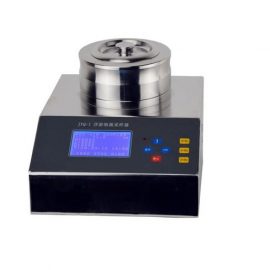
# Microbial Air Sampler: A Comprehensive Review of Applications and Advancements
## Introduction
Microbial air samplers have become indispensable tools in various industries, from healthcare to food production. These devices play a crucial role in monitoring and controlling airborne microorganisms, ensuring safety and quality in numerous environments. This article delves into the applications, advancements, and significance of microbial air samplers in today’s world.
## Understanding Microbial Air Samplers
Microbial air samplers are specialized devices designed to collect and quantify airborne microorganisms. They operate by drawing in a specific volume of air and capturing the microorganisms onto a collection medium, such as agar plates or filters. The collected samples can then be analyzed to identify and quantify the types and concentrations of microorganisms present in the air.
### Types of Microbial Air Samplers
There are several types of microbial air samplers, each with its unique mechanism and application:
– Impaction Samplers: These samplers use a high-velocity air stream to impact microorganisms onto a solid surface, typically an agar plate.
– Filtration Samplers: These devices capture microorganisms by passing air through a filter, which retains the particles.
– Impinger Samplers: These samplers collect microorganisms by bubbling air through a liquid medium, which captures the particles.
– Electrostatic Precipitators: These devices use an electric field to charge and collect airborne particles.
## Applications of Microbial Air Samplers
Microbial air samplers are utilized in a wide range of industries and environments:
### Healthcare Facilities
In hospitals and clinics, microbial air samplers are essential for monitoring air quality in operating rooms, isolation wards, and other critical areas. They help in detecting and controlling the spread of airborne pathogens, thereby reducing the risk of hospital-acquired infections.
### Pharmaceutical Industry
The pharmaceutical industry relies heavily on microbial air samplers to ensure the sterility of production environments. These devices are used to monitor cleanrooms and controlled environments where drugs and medical devices are manufactured.
### Food Production
In the food industry, microbial air samplers are used to monitor air quality in processing and packaging areas. They help in preventing contamination by airborne microorganisms, ensuring the safety and quality of food products.
### Environmental Monitoring
Microbial air samplers are also used in environmental studies to assess air quality in various settings, including urban areas, industrial sites, and natural environments. They provide valuable data on the presence and concentration of airborne microorganisms, which can be used to assess environmental health and safety.
## Advancements in Microbial Air Sampling Technology
Recent advancements in microbial air sampling technology have significantly improved the efficiency and accuracy of these devices:
### Automation and Real-Time Monitoring
Modern microbial air samplers are increasingly equipped with automation features and real-time monitoring capabilities. These advancements allow for continuous air quality monitoring and immediate detection of microbial contamination, enabling prompt corrective actions.
### Enhanced Sensitivity and Specificity
Advancements in sensor technology and analytical methods have led to microbial air samplers with enhanced sensitivity and specificity. These improvements enable the detection of low concentrations of microorganisms and the identification of specific pathogens with greater accuracy.
### Portable and Compact Designs
The development of portable and compact microbial air samplers has expanded their applications to field studies and on-site monitoring. These devices are lightweight, easy to use, and can be deployed in various environments, providing flexibility and convenience.
### Integration with Data Analytics
Integration with data analytics platforms allows for the collection, storage, and analysis of large volumes of air quality data. This integration facilitates trend analysis, predictive modeling, and informed decision-making in air quality management.
## Conclusion
Microbial air samplers are vital tools in maintaining air quality and ensuring safety across various industries. With continuous advancements in technology, these devices are becoming more efficient, accurate, and versatile. As the demand for air quality monitoring grows, microbial air samplers will continue to play a crucial role in safeguarding public health and environmental safety.
Keyword: Microbial Air Sampler
